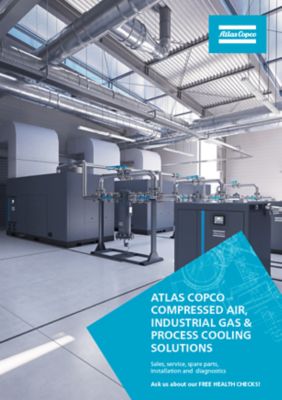All about oxygen generators for biogas
When creating biomethane from biogas, it's important to remove hydrogen sulfide (H2S). This is because it's corrosive and removal is essential for compliance. There are many ways to handle this, including with oxygen (O2). O2 typically can be produced on-site with oxygen generators for biogas. These machines play an important role in generating high-quality biomethane.
To create biomethane, biogas is needed. This is made from decomposed waste feedstock. During decomposition, "anaerobic digestion," occurs, which also creates H2S. It is at this stage, in a digester, that H2S needs to be removed. Doing so starts the process of turning biogas into biomethane. It's also worth mentioning that with biomethane, most energy grids have allowable H2S limits.
If you'd like to learn more about the biomethane production process, read our related content on the role of O2 in H2S removal. In the following text, we focus on why to use oxygen generators for biogas, how they work, and choosing the best size. Continue reading to learn more.
Why use oxygen generators for biogas
Like pointed out in the introduction, there are several methods for removing H2S from biogas. These include ferric dosing and activated-charcoal filters, among others. With these methods, additional costs and maintenance are needed, compared to O2. When O2 is used, a simple aerobic reaction occurs, leaving sulfur and water.
There are two ways to receive O2 for biogas. These include delivery and on-site generation, as mentioned. That said, O2 generation is often the preferred solution. This is because O2 deliveries require coordination and are dependent on supplier availability. Additionally, O2 deliveries are less environmentally friendly as their transport produces CO2. Lastly, on-site O2 generation guarantees you'll always have the right volume and purity level.
When turning biogas into biomethane, attention must be paid to the oxygen purity level. Using O2 with too low purity can result in reduced energy content from the biogas. Unnecessarily high purity and flow levels on the other hand can introduce safety risks. When dealing with O2 for H2S removal, it's important all the right steps are followed. On-site generation is helpful here.
How oxygen generators work
An O2 generator takes dry compressed air and separates the oxygen in it to produce O2 with the desired purity level. It's important to make the distinction here that, while air contains oxygen, it's not ideal for industrial processes requiring higher oxygen concentration. This includes biomethane production. Using air generated from a compressor alone would not be sufficient.
Normal air contains 78% nitrogen (N2), 21% oxygen (O2), and other gasses. Oxygen generators rely on Pressure Swing Adsorption technology and zeolite adsorbent to separate the oxygen from the nitrogen in compressed air. After that, the oxygen is stored and prepared for use.
Advanced, modern oxygen generators come with technology like Variable Cycle Saver (VCS). This ensures minimal energy consumption during lower demand. As a result, energy costs can be reduced by up to 70% during low load conditions, when compared to traditional equipment.
Choosing the best size
When sizing an oxygen generator for a biogas plant, there are several questions to answer. These include the following:
What is the biogas flow of the plant?
How many digesters are there? Will they all use O2 at once?
What is the target steady state of O2?
Is a plug and play O2 generation container necessary? This applies when no plant room is present.
How is O2 dosing controlled?
We're here to help
If you'd like more information about the topics explained in this article, feel free to reach out to our team. We're happy to point you in the right direction, including our range of oxygen generators for biogas. We also serve other industries with high O2 purity demands. Get in touch today.

